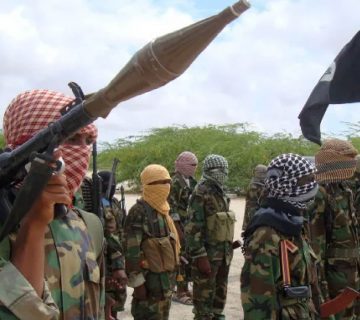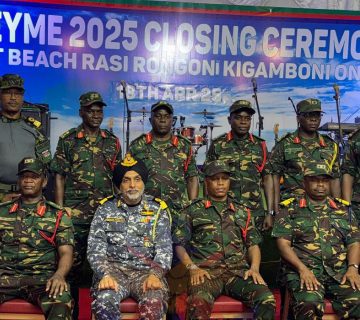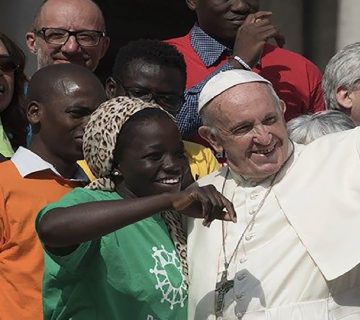United Nations Security Council Resolution 2372 of August 30 2017 set the exit for African Union Mission in Somalia (AMISOM) by 2020. This would be over a decade of the mission’s mandate, yet challenges still linger on as far as elimination of al Shabab and stabilization of Somalia are concerned.
AMISOM has made significant military gains against al Shabab militant group turned terrorists. The mission has made territorial recovery and driven the group out of its strongholds, major towns, and ports. However, the focus of the mission, due in part to limited resources, has been operating in some urban areas. The group has, however, moved into the hinterlands from where it operates, regroups, and equips. It has also enabled it to continue gaining financial access, proselytizing, and recruiting new members.
More time and resources for AMISOM will enable it penetrate the hinterlands and decimate al Shabab’s territorial and offensive capabilities. AMISOM has also not invested enough in de-radicalization and de-legitimization of the group across Somalia, which leaves support spaces and networks for the ideology of the terrorist group. These two factors have only led to al Shabab shifting grounds and establishing new areas of operations while maintaining support that allows them to recruit, plan, and carry out attacks.
Al Shabab has also been recapturing regions and towns from AMISOM forces and reoccupying areas left by withdrawing forces. For instance, in June 2015, the group recaptured the area of Lego from Burundi forces after a raid that left at least 50 of 100 Burundi soldiers dead. In 2016, it recaptured the port of Merka, 60 miles South of Mogadishu, and El Adde after a raid that left over 150 Kenyan soldiers dead. It has also moved into several former Ethiopian military bases after their withdrawal, reversing gains made.
Al Shabab has launched vicious attacks on AMISOM targets. In 2015, it attacked Burundi forces in Lego killing 50, in January 2016, it attacked Kenyan forces killing over 150, in April 2018, it killed at least 50 Ugandan forces, and other low scale attacks and attempts. It has also carried out deadly civilian attacks such as the 2013 Westgate attack that left 67 dead, Mpeketoni attack that left at least 48 people dead and Garissa attack that left 147 people dead, in Kenya. In Uganda, the group’s attack left 74 dead in 2010. In Somalia, the group bombed a hotel in Mogadishu in October 2017 leaving over 300 dead, just three months after the UNSC Resolution setting exit for AMISOM. It has continued to carry out low scale attacks on civilians and security officers in the region. Latest incidents include attacks that killed two Somali National Army officers in Beledwey, Hiraan region on 14 June 2018 and five others on 15 June 2018 in Daynile District, Mogadishu. Kenyan Administration Police officers have also been attacked and killed in Bojigaras area of Wajir County on 17 June 2018 by the group.
The focus on al Shabab by AMISOM could also be leaving room for other militants and extremist groups such as the Islamic State for Iraq and al Sham (ISIS), Hizbul Islam and the connection between all of them and global terrorism to grow.
The resolution to end the mandate of AMISOM could also be blinded by military gains made of recovering 80% of hitherto al Shabab controlled areas and reduced piracy activities at the sea done by al Shabab elements. However, politico-security dynamics of Somalia remain delicate. The Somalia National Army (SNA), intelligence agencies and police forces’ capacity to provide adequate security, maintain stability and ward off extremists upon AMISOM’s exit is in doubt. These security agencies have been receiving training from European Union (EU), Turkey, United Arab Emirates, United States of America and lately Germany. However, this training lacks consistency and proper coordination that inculcates the forces with military discipline, national ownership and patriotism to hold out against extremists and militant groups.
The political and sociological factors in Somalia seem to have escaped the attention of the UNSC. The federal government of Somalia still faces challenges as far as stabilization is concerned. The provisional constitution of 2012, the federal parliament and representatives, the president and his executive and the judiciary face legitimacy questions. The institutional capacity for the federal government to govern effectively is still less developed and this may not be guaranteed by 2020. Clan rivalries in Somalia’s politics have also not been effectively addressed and will pose a threat to politico-security arrangements. At the same time, TFG faces sovereignty claims with quasi-independent regions such as Galmudug, Maakhir, Northland, Puntland, Somaliland and South-Western Somalia. The relationship between the federal and regional governments is characterized with friction, something that undermines the functionality of the governance system. There are also disputes and armed conflicts among the quasi-independent regions especially between Somaliland and Puntland over Sool and Sanaag regions among other issues.
AMISOM’s own assessment of the situation in Somalia into the future, in light of the 2020 deadline, is also an admonition. At AMISOM Head of State summit of troop contributing countries in Kampala in March 2018, Uganda’s foreign affairs minister, Sam Kutesa, warned that the drawdown of forces might endanger and reverse the hard fought gains. He emphasized capacity-building support for Somalia’s federal government. He also stated that the United Nations Security Council resolution timeframes and troop levels were unrealistic.
As AMISOM prepares to drawdown by another 1000 forces (second batch) in October this year, all these politico-security challenges are still alive. The Special Representative of African Union chair for Somalia, Francisco Madeira, at the AMISOM Head of State Summit, explained that the drawdown will be gradual, conditions-based, responsible and done in a manner not to compromise security and safety of the Somali people. However, all this is bound by a deadline and conditions (drawdown levels and timeframes) that seem unrealistic. AMISOM suffers resource constraints that have further taken a dip with EU reducing allowances for troops from $ 1, 028 to $ 822. This challenge undermines AMISOM’s operational capabilities.
The exit of AMISOM from Somalia leaves possible military and power vacuums which if the federal government cannot ably fill, the menace of al Shabab, clan rivalries, and political militancy will be reincarnated. This is besides seething secessionist forces of autonomous regions upon the federal government and legitimacy challenges. Therefore, AMISOM has to re-engineer its model to inter-operationalize military campaigns with security (police and intelligence) and politico-social projects for sustainable peace in Somalia. If possible, AMISOM’s deadline should be reconsidered and mandate extended. More development funding from extra sources such as OECD, World Bank and IMF, African Development Program, United Nations Development Program (UNDP), NEPAD, and China, should be sought and channelled into institutional capacity building, social development programs and political projects that address the question of quasi-independent regions and clan rivalries. Somalia’s federal security arrangements also need thorough capacity building through training, equipping and regularization. More investment should be done in delegitimizing the nativist sentiments and fundamentalist ideologies that undermine the legitimacy of AMISOM and breed support for al Shabab, Hizbul Islam among other Islamist and clan militants.
The federal government of Somalia needs to exercise authority and responsibility, and to practice inclusion, justice and fairness, to protect its legitimacy lest militant opposition groups gain influence over populations again. Regional countries need to forge local support mechanisms for stabilization of Somalia which will go beyond 2020 to be fully realized. As things stand, the 2020 AMISOM deadline, extant realities, and elections of 2020 delicately sandwich ‘project Somalia.’
Edmond Pamba is a Research Assistant at the HORN Institute.




Your point of view caught my eye and was very interesting. Thanks. I have a question for you.
Thank you for your sharing. I am worried that I lack creative ideas. It is your article that makes me full of hope. Thank you. But, I have a question, can you help me?
Your point of view caught my eye and was very interesting. Thanks. I have a question for you.
Your article helped me a lot, is there any more related content? Thanks!
Your article helped me a lot, is there any more related content? Thanks!
Your article helped me a lot, is there any more related content? Thanks!
I don’t think the title of your article matches the content lol. Just kidding, mainly because I had some doubts after reading the article.
Thank you for your sharing. I am worried that I lack creative ideas. It is your article that makes me full of hope. Thank you. But, I have a question, can you help me?
Thank you for your sharing. I am worried that I lack creative ideas. It is your article that makes me full of hope. Thank you. But, I have a question, can you help me?
Your point of view caught my eye and was very interesting. Thanks. I have a question for you.
Your point of view caught my eye and was very interesting. Thanks. I have a question for you.
Thank you for your sharing. I am worried that I lack creative ideas. It is your article that makes me full of hope. Thank you. But, I have a question, can you help me?